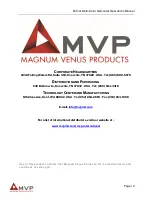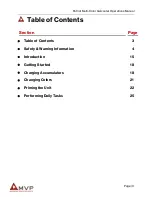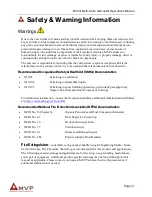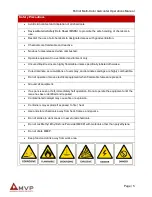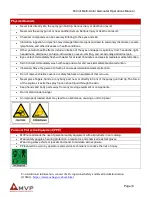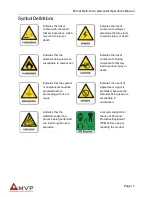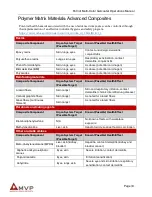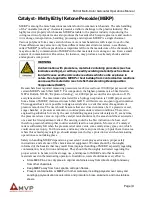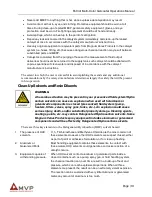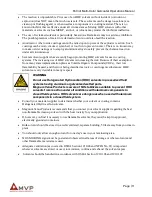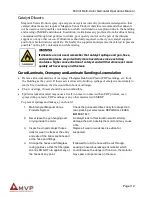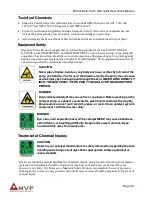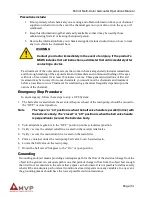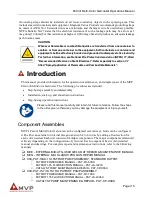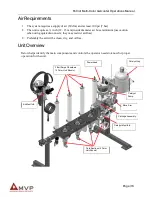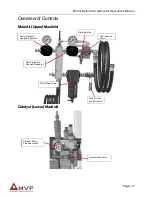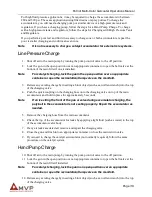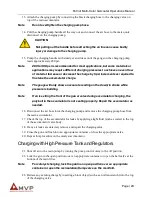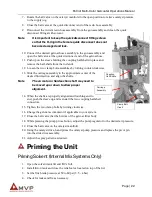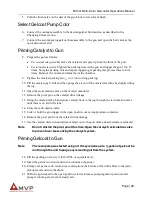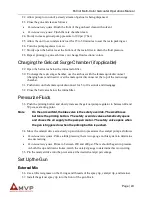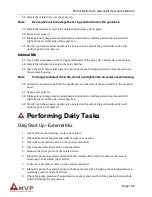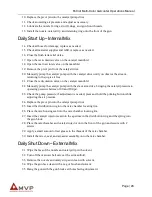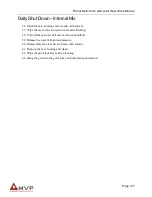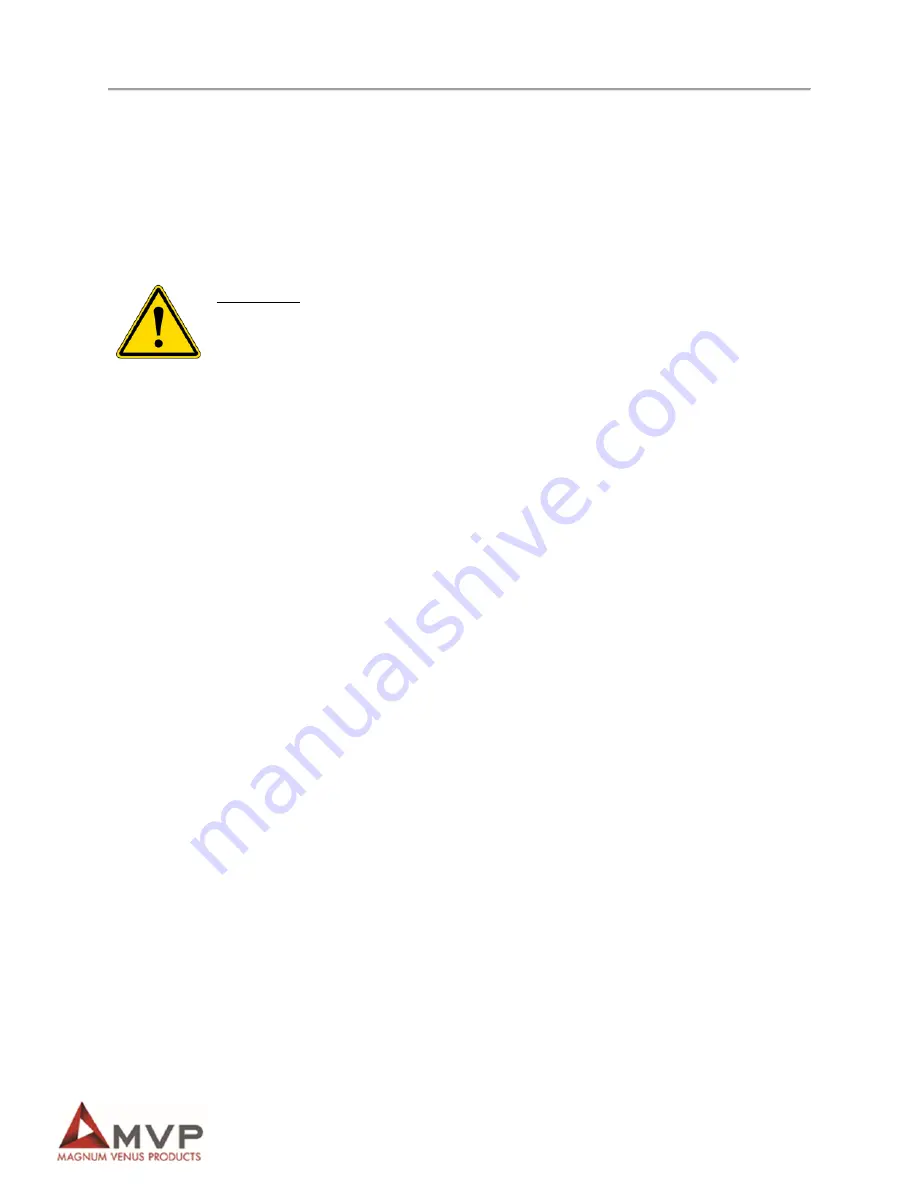
Patriot Multi-Color Gelcoater Operations Manual
Page | 14
Precautions include:
1. Know precisely what chemicals you are using and obtain information from your chemical
supplier on what to do in the event the chemical gets onto your skin or into the eyes, or if
swallowed.
2. Keep this information together and easily available so that it may be used by those
administering first aid or treating the injured person.
3. Be sure the information from your chemical supplier includes instructions on how to treat
any toxic effects the chemicals have.
WARNING
Contact your doctor immediately in the event of an injury. If the product’s
MSDS includes first aid instructions, administer first aid immediately after
contacting a doctor.
Fast treatment of the outer skin and eyes that contact chemicals generally includes immediate
and thorough washing of the exposed skin and immediate and continuous flushing of the eyes
with lots of clean water for at least 15 minutes or more. These general instructions of first aid
treatment may be incorrect for some chemicals; you must know the chemicals and treatment
before an accident occurs. Treatment for swallowing a chemical frequently depends upon the
nature of the chemical.
Emergency Stop Procedure
In an emergency, follow these steps to stop a UPS System:
1. The ball valve located where the air enters the power head of the resin pump, should be moved to
the “OFF” or closed position.
Note
The “open” or “on” position is when the ball valve handle is parallel (in line) with
the ball valve body. The “closed” or “off” position is when the ball valve handle
is perpendicular (across) the ball valve body.
2. Turn all system regulators to the “OFF” position (counter-clockwise) position.
3. Verify / secure the catalyst relief line, located on the catalyst relief valve.
4. Verify / secure the resin return line, located on the resin filter.
5. Place a container under the resin pump ball valve to catch ejected resin.
6. Locate the ball valve on the resin pump.
7. Rotate the ball valve 90 degrees to the “On” or open position.
Grounding
Grounding an object means providing an adequate path for the flow of the electrical charge from the
object to the ground. An adequate path is one that permits charge to flow from the object fast enough
that it will not accumulate to the extent that a spark can be formed. It is not possible to define exactly
what will be an adequate path under all conditions since it depends on many variables. In any event,
the grounding means should have the lowest possible electrical resistance.


